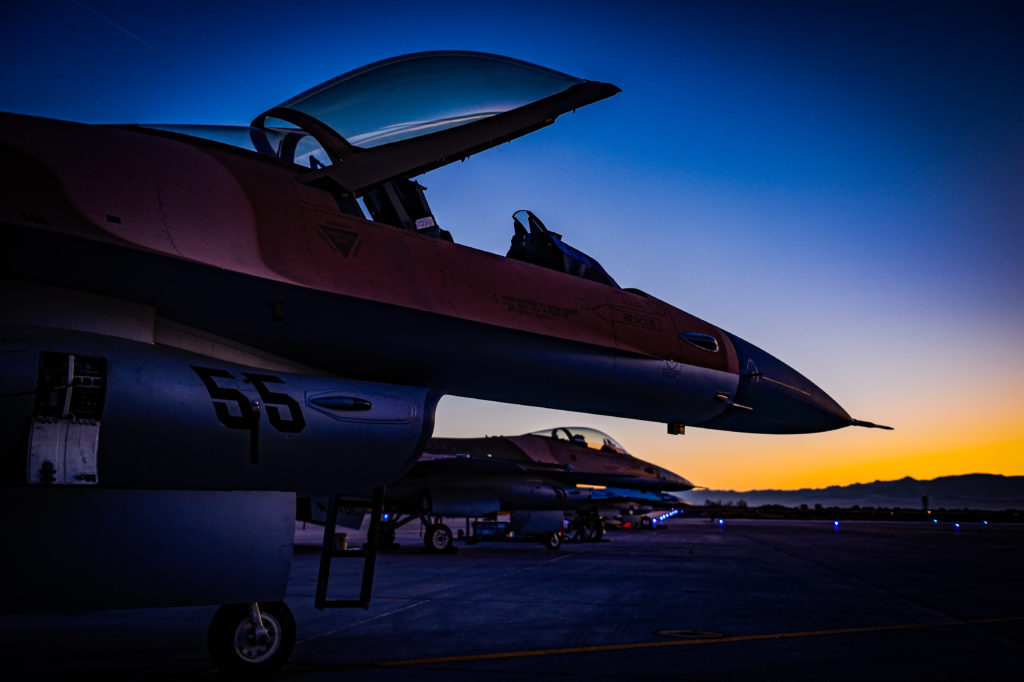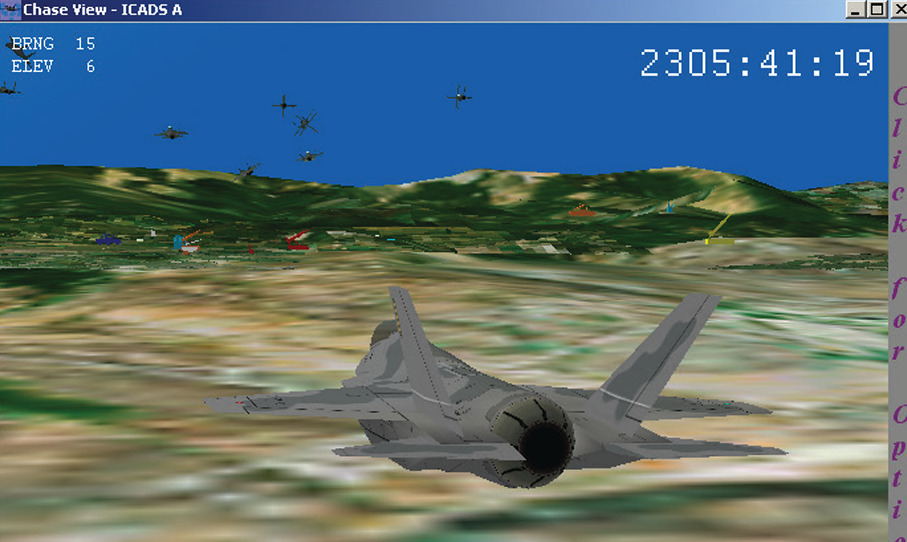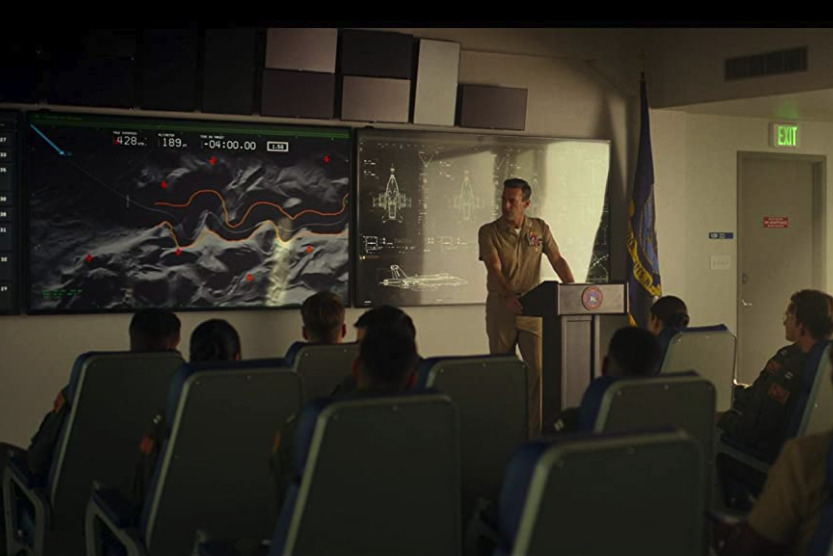Estimated reading time 10 minutes, 31 seconds.
Whatever your opinion of the script, Top Gun: Maverick has offered aviation buffs a stunning representation of combat flying. The aerial maneuvers of the F/A 18E/18F Super Hornet, Sukhoi Su-57 Felon, and F-14 Tomcat had “to be practically real,” the movie’s aerial stunt coordinator, Kevin LaRosa, told Skies last June. Or, at least, look as real as possible.
That in-the-cockpit feeling was undoubtedly part of what propelled the long-anticipated sequel to the top of the box office in 2022, a year that featured at least four major Marvel Studios films.

The realism of flight was also evident in the mission rehearsal that Pete “Maverick” Mitchell put his junior charges through before deploying on their covert operation. Like the brief cameo of the F-14, the simulated route in their navigation system was also a technological throwback to the original 1986 movie.
You’ll no doubt recall the scene in Top Gun where Maverick and Goose abandon Hollywood’s wing to pursue Viper, and Jester pops up behind them for the kill shot. “The Defense Department regrets to inform you that your sons are dead — because they were stupid,” Goose quips. Later, though, Jester tells Maverick: “That was some of the best flying I’ve seen to date — right up to the part where you got killed.”
The system that captured Maverick’s flying skills – and Jester’s strike – is a product of Cubic Mission and Performance Solutions. Known as Combat Training System, it has evolved considerably since then.
What was on display in the original movie is an accurate “representation of the systems I had in the late ‘90s,” said Jon Wheeler, Cubic’s senior business development manager and a graduate of the U.S. Air Force Weapons School who flew the F-16 and F-35 and served most recently as the Wing Commander of the 33rd Fighter Wing — a training wing for new F-35 pilots at Eglin Air Force Base in Florida.

Today, the U.S. Air Force and Navy operate a more advanced version called P5 Combat Training System (P5CTS), known as Tactical Combat Training System (TCTS) by the Navy.
(A variant of the system, P4, is used by the Royal Canadian Air Force for its fighter pilot training on the CT-155 Hawk at 419 Tactical Fighter Training Squadron in Cold Lake, Alberta. Though the P4 does not have the pod-to-pod relay that gives the P5CTS its range, it has the ground infrastructure to integrate the P5CTS, meaning visiting units can connect with their newer systems and “get a complete picture,” said Wheeler. “That’s actually unique to Cold Lake.”)
The combat training system was initially developed in the wake of the Vietnam War as part of a response to concerns about deteriorating aerial combat skills. Where Red Flag exercises were established to rigorously prepare pilots for the first missions of combat, Cubic’s system was designed to help measure performance.
Aircraft systems and pilot memory provide only parts of what happens in a training flight. The CTS delivers what Wheeler called “truth data,” capturing the exact mission profile for playback, debriefing, and analysis. Over the years, the system has evolved to incorporate more aircraft over greater range, with a three-dimensional picture of the flight pattern, all monitored in real time from the ground.
The next bound includes encryption. In June, Cubic was awarded the Air Force P5CTS System Security Update (SSU), a multilevel encryptor that will manage access and data transfer between security domains on the system. The update will eventually allow forth-generation aircraft to train securely with F-35s in an encrypted environment that will protect from enemy exploitation the techniques, tactics, and procedures on display during Top Gun: Maverick’s mission rehearsal.
With the system secured from intrusion, the Navy and Air Force are looking at the next evolution that would include Live Virtual Constructive (LVC) capabilities to network pilots on training ranges with virtual pilots flying in tactical simulators and computer-generated forces.
“They are in the process of starting to transition to the next generation of training systems . . . [to] how we make this into a blended training environment,” said Wheeler.
Connecting and realistically displaying all those entities in the air is a “big technical challenge,” especially with the distance fighter jets can cover on a range, he added. “So, it’s all through the RF spectrum and new techniques that allow you to use a smaller portion of the RF spectrum to get across the same amount of information.”

That LVC capacity will be critical to F-35 pilots training to face peer adversaries. “In a fourth gen fight we could get enough iron airborne so that we can [create] what we think is a realistic scenario against just about any high-end adversary,” explained Wheeler. “As high-end adversary capabilities have grown, we’re to the point that we can’t afford to put up enough aircraft to make it be realistic.
“You [also] need to be able to replicate some kind of stealth on your adversary in order to make it an accurate depiction of what you’re going to fight for the high-end fight.”
Fighter training has shifted substantially from a focus on kinetic effects to a combination of kinetic and non-kinetic effects, said Wheeler, “and the non-kinetic effects are predominant.”
In an aircraft like the F-35, it’s about maximizing the sensor suite, sharing information, and accessing data “off of my system,” he explained. “How do I facilitate those? How do I use those to my advantage? You’ll often hear that the F-35 is meant to be the quarterback. The sensor suite . . . [is] where its strength is. It’s not its maneuverability, it’s certainly not how many Gs it can pull and sustain. That’s a 2004 way of thinking. It’s more about what kind of information, what kind of situational awareness can I pass and how do I pass it?”
An LVC training environment can replicate much that, noted Wheeler.










